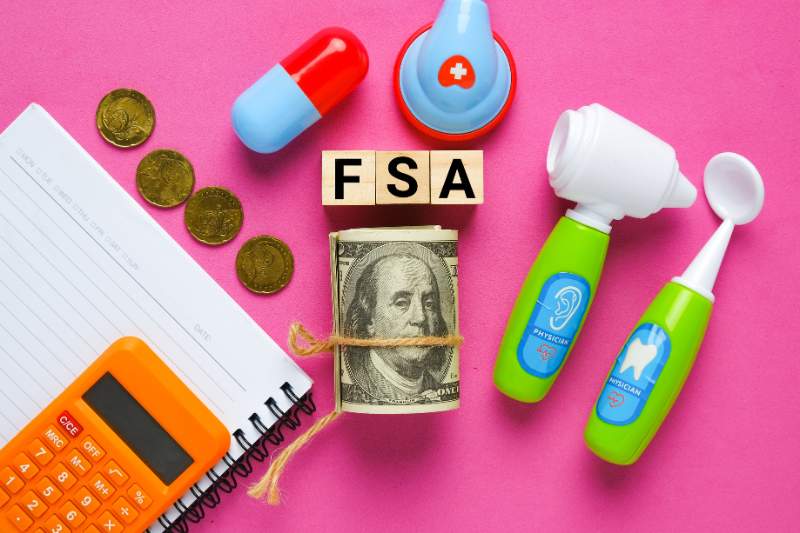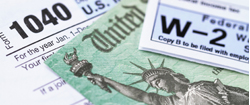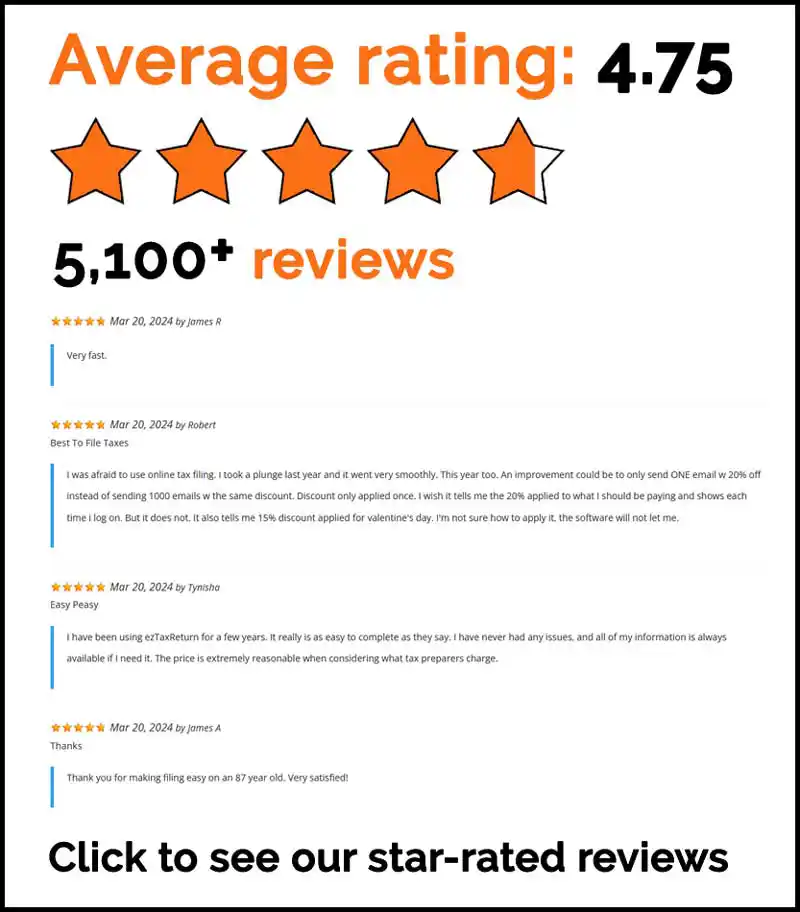The information in this article is up to date for tax year 2025 (returns filed in 2026).
Flexible Spending Accounts (FSAs) let you set aside pre-tax dollars for eligible medical, dental, vision, and dependent care expenses. By contributing to an FSA, you lower your taxable income, which reduces the amount you owe in federal income, Social Security, and Medicare taxes.
In this article, we’ll break down exactly how FSAs affect your taxes, explain the benefits of both health care and dependent care FSAs, and share strategies to maximize your tax savings while making the most of your pre-tax contributions.
Key Takeaways
- Flexible spending accounts let you cut taxes by using pre-tax dollars for eligible health and dependent care expenses, saving you money in the long run.
- Making the most of your FSA means understanding contribution limits, eligible expenses, and the rules for unused funds to avoid losing any hard-earned cash.
- Staying organized is key: keep track of receipts and consider using technology for easy claims submission to manage your FSA effectively.
How FSAs Work
Flexible spending accounts (FSAs) are a financial game-changer when it comes to payroll tax savings. Think of them as a secret weapon in your financial arsenal, letting you set aside pre-tax dollars for specific expenses. But what does that entail? When you contribute to a healthcare FSA, the money is deducted from your salary before taxes are calculated, effectively lowering your taxable income. This means you’re not paying federal income tax, Social Security, or Medicare taxes on the amount you contribute.
FSAs aren’t only for health care expenses; dependent care FSAs let you use pre-tax dollars for dependent care costs like day care expenses, offering substantial relief for working parents.
Both types of FSAs enable you to use your money more efficiently, retaining more of it rather than contributing it to taxes.
Types of Flexible Spending Accounts (FSAs)
Flexible spending accounts come in different types to suit various needs. Understanding the distinctions can help you choose the right FSA for your situation.
Healthcare FSA
This is the most common type of flexible spending account. A healthcare FSA allows you to set aside pre-tax dollars to pay for qualified medical expenses that your health plan may not cover fully. Eligible expenses include co-pays, prescription medications, dental and vision expenses, medical equipment like hearing aids, and over-the-counter medicines with a doctor’s prescription. The entire amount of your annual contribution is available at the start of the plan year, giving you immediate access to funds for eligible health care expenses.
Dependent Care FSA
A dependent care FSA helps you cover costs related to the care of dependents while you work or attend school. Eligible expenses typically include daycare, preschool, and before- or after-school programs for children under 13, as well as care for a spouse or dependent who is physically or mentally incapable of self-care. Unlike the healthcare FSA, the dependent care FSA is not pre-funded; you can only be reimbursed up to the amount you have contributed at that point in the plan year. Contributions to this account are also made on a pre-tax basis, providing tax savings.
Limited Purpose FSA
This type of FSA is designed for individuals who have a Health Savings Account (HSA). The limited purpose FSA covers only dental and vision expenses, allowing you to preserve your HSA funds for other medical costs. It works similarly to a healthcare FSA but with a narrower scope of eligible expenses.
What Can You Buy with an FSA?
Flexible Spending Accounts (FSAs) cover far more than just co-pays and prescriptions. From everyday health essentials to some surprising items, here’s a breakdown of FSA-eligible expenses you can use to maximize your tax savings.
Common FSA-Eligible Expenses
These are the basics most people use their healthcare FSA for:
- Doctor visit co-pays and coinsurance
- Prescription medications
- Over-the-counter (OTC) medicines like pain relievers or allergy meds
- Bandages, first aid kits, and thermometers
- Braces, wraps, and crutches
- Dental cleanings, fillings, and orthodontics
- Eye exams, glasses, contact lenses, and lens solution
- Chiropractic and acupuncture treatments
- Physical therapy and mental health counseling
Preventive & Routine Care
Preventive care is also covered under most FSAs, helping you stay healthy without extra costs:
- Flu shots and routine vaccines
- Blood pressure monitors and health screenings
- Prenatal vitamins and certain fertility treatments (if prescribed)
- Diagnostic tests and lab work
Surprising FSA-Eligible Items
Here’s where things get interesting, many people don’t realize these items can also qualify:
- Sunscreen (SPF 30 or higher) counts as an eligible preventive item.
- Menstrual care products including pads, tampons, and menstrual cups.
- Breast pumps and accessories are fully FSA-eligible as medical equipment.
- Baby monitors with health tracking are covered when used for medical reasons.
- Compression socks are great for circulation or long travel days.
- Motion sickness aids like acupressure wristbands or OTC medication.
- Pregnancy and ovulation test kits are covered as diagnostic tools.
- Medical alert bracelets, if used for a documented medical condition
- Sleep aids like nasal strips are eligible when used for snoring or breathing issues
What’s Not FSA-Eligible
It’s just as important to know what doesn’t qualify under IRS rules:
- Gym memberships or general fitness classes (unless prescribed for a condition)
- Cosmetic procedures such as teeth whitening or Botox for appearance
- Vitamins and supplements (unless prescribed for a diagnosed deficiency)
- Massage therapy without a doctor’s note
Using your FSA funds strategically can make a big difference in your yearly savings. The more you know about what’s covered, the more you can stretch your health care dollars, and reduce your taxable income in the process.
Tax Savings from FSAs
How do FSAs translate into tax savings? Contributions to a flexible spending account are made with pre-tax dollars, effectively lowering your taxable income for federal taxes. This is where the magic happens. Using FSA funds for eligible expenses saves you on federal income tax, Social Security, and Medicare taxes.
For example, if you earn $50,000 a year and contribute $2,000 to your FSA, with a tax rate of 30%, you’re looking at potential savings of around $600 just by using pre-tax dollars for qualifying expenses. That’s money that stays in your pocket rather than being sent off to pay taxes.
On average, using a flexible spending account can result in a 30% savings by utilizing pre-tax income for qualifying expenses. Every dollar you contribute stretches further, making it easier to manage your health care expenses and enjoy a tax break. It’s like having your cake and eating it too, with the added benefit of better financial health.
Contribution Limits
The IRS sets annual contribution limits for FSAs, which are crucial for maximizing tax savings. For 2025, the maximum contribution limit for healthcare FSAs is $3,300. This amount can be a significant part of your strategy for managing health care expenses while reducing your taxable income.
For dependent care FSAs, the annual contribution limit is $5,000 per household in 2025. This limit applies whether you are single or married filing jointly; if married filing separately, the limit is $2,500 each. Unlike healthcare FSAs, you can’t carryover funds from one year to the next. Any unused amounts will be forfeited at the end of the year.
In 2026, the maximum contribution increases slightly to $3,400 for healthcare FSAs, and the dependent care FSA limit rises to $7,500 per household for married filing jointly or single filers, and $3,750 for married filing separately. Staying within these limits ensures you get the most out of your FSA without violating IRS guidelines. Careful planning of your contributions allows you to maximize your FSA and enjoy the accompanying tax benefits.
Grace Periods and Carryover Rules
One of the most confusing parts of managing a flexible spending account is knowing what happens to unused funds at the end of the plan year. Fortunately, there are a few provisions that can help you keep more of your money, if you know how they work.
FSA Carryover Option
Many employers allow you to carry over up to $660 in unused FSA funds into the next plan year. Starting in 2026, that carryover limit increases to $680, giving employees a little extra flexibility to manage unexpected health care expenses.
The carryover option helps reduce the pressure to spend your entire FSA balance by year’s end, allowing you to roll over a portion for future eligible expenses.
FSA Grace Period
Alternatively, some employers offer a 2½-month grace period after the plan year ends. This grace period gives you additional time, usually until mid-March, to use up your remaining FSA balance on eligible expenses.
During this time, claims are paid using leftover funds from the previous plan year before drawing from your new year’s contributions.
Important: Employers can offer either a grace period or a carryover option, but not both, for the same plan year.
The “Use-It-or-Lose-It” Rule
If neither a carryover nor a grace period is offered, the traditional use-it-or-lose-it rule applies. This means any unspent FSA funds at the end of the plan year are forfeited.
That’s why it’s important to plan your FSA contributions carefully. Estimate your annual medical, dental, and vision expenses so you can maximize your tax savings without leaving money on the table.
Pro Tip: Keep track of your balance throughout the year and make a list of upcoming medical appointments or eligible purchases (like prescriptions or new glasses) to use any remaining funds before the deadline.
Managing Your FSA Account
Effective FSA account management not only saves time but also helps you get the most from your pre-tax dollars. A little organization can prevent reimbursement delays and ensure every eligible expense is properly documented.
Keep Detailed Receipts
Always keep itemized receipts for your FSA-eligible expenses. These records serve as proof for reimbursements or potential tax inquiries and should include:
- Patient’s name
- Provider’s name
- Date of service
- Type of service or product purchased
- Cost of the service or item
Avoid sending credit card receipts or canceled checks, as they typically don’t include enough detail to verify your claim.
Simplify FSA Management with Technology
Managing your healthcare FSA is easier than ever thanks to online tools and mobile apps. Most FSA plans allow you to:
- Snap photos of receipts and upload them directly for reimbursement
- Submit claims online or through your plan’s mobile app
- File claims by fax or mail if preferred
Participating in paperless reimbursement can further streamline the process and reduce turnaround time.
Tips for Staying Organized
To make the most of your FSA benefits:
- Check if your health insurance provider automatically forwards claims to your FSA administrator, this can speed up reimbursement.
- Review your account balance regularly to avoid forfeiting unused funds before the plan year ends.
- Keep digital copies of receipts and claim confirmations in one place for easy access.
Smart FSA account management ensures you’re reimbursed quickly, stay compliant with IRS requirements, and maximize your tax savings, all while keeping your health care expenses organized and stress-free.
FSA Enrollment and Open Season
Participating employees in an employer-sponsored FSA must actively enroll each year, as enrollment is not automatic. You need to sign up and make your contribution elections during the designated enrollment period.
The “open season” for FSA enrollment typically occurs once a year, often in the fall months. During this time, you can enroll in an FSA, adjust your contribution amounts, or make changes to your elections. Outside of Open Season, changes to your FSA elections can only be made if you experience qualifying life events such as marriage, the birth of a child, or other significant changes.
Missing the enrollment window means missing out on valuable tax savings. Stay informed about your employer’s plan and take advantage of Open Season to maximize your benefits and make the most of your FSA.
Common Mistakes to Avoid
Even with the best intentions, mistakes with FSAs are common. A common error is misunderstanding which medical expenses are eligible for reimbursement, leading to potential disqualification of claims. For instance, not all over-the-counter medicines and over the counter drugs are covered without a doctor’s prescription, which can catch some people off guard.
Another frequent mistake is not adjusting FSA contributions annually based on changing medical needs, risking unused funds. This can result in money being forfeited at the end of the plan year. Reviewing and adjusting your contributions each year helps you avoid these pitfalls and ensures your FSA works efficiently for you.
Summary
In summary, FSAs are a powerful tool for managing health care expenses and maximizing tax savings. By contributing pre-tax dollars to your FSA, you can reduce your taxable income and save on federal income tax, Social Security, and Medicare taxes. Understanding eligible expenses, contribution limits, and the rules around grace periods and carryovers is crucial for making the most of your FSA.
We hope this guide has provided you with the information you need to take control of your FSA account and maximize your financial savings. By staying informed and proactive, you can ensure that your flexible spending account works efficiently for you, helping you manage your health care expenses and keep more of your hard-earned money.
Frequently Asked Questions
What types of expenses are eligible for reimbursement under an FSA?
You can get reimbursed for things like doctor co-pays, prescription medications, dental and vision costs, and some over-the-counter stuff if you have a doctor’s note. Just keep track of your receipts!
How do contributions to an FSA provide tax savings?
Contributing to an FSA lets you use pre-tax dollars, which means you reduce your taxable income and save on federal, Social Security, and Medicare taxes. It’s a smart way to keep more of your cash in your pocket!
What are the contribution limits for FSAs in 2025?
For 2025, you can contribute up to $3,300 to your healthcare flexible spending account. That’s a solid amount to help cover your medical expenses!
What happens to unused FSA funds at the end of the plan year?
Unused FSA funds might either roll over up to $660 to the next year or you could get a 2.5-month grace period to spend what’s left. So, check your plan to see what applies!
How can I manage my FSA account effectively?
To effectively manage your FSA account, keep your itemized receipts handy, submit claims promptly using your plan’s available methods, and consider going paperless for faster reimbursement. Staying organized and proactive makes managing your flexible spending account much simpler and helps ensure you maximize your benefits.
Tax season? You’ve got this. ezTaxReturn makes filing easy and accurate, so you can feel great knowing your return is done right.
File today and get your maximum refund, guaranteed.
The articles and content published on this blog are provided for informational purposes only. The information presented is not intended to be, and should not be taken as legal, financial, or professional advice. Readers are advised to seek appropriate professional guidance and conduct their own due diligence before making any decisions based on the information provided.




